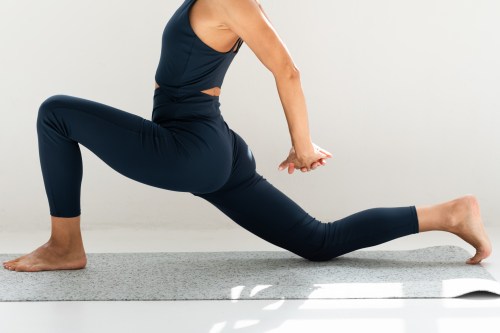You know how moms end up holding all the jackets during a family outing? That’s basically how lower back pain happens. No, it’s not literally because of holding jackets. In our bodies, when our hamstrings are tight, our glutes are tired, or our core is disengaged, one part of our body has to compensate and carry the load: the lower back.
Experts in This Article
trainer and co-owner of Session in Brooklyn
Essentially, without our other muscles absorbing the stress they’re supposed to during activities like walking, the load gets dumped into the lower back (like mom with her jackets). Unfortunately, it doesn’t have muscles designed to handle that, which is how low back pain happens.
That’s why “lower back strengthening” is actually not about building muscle in your lower back itself. It’s about activating your core and your glutes.
This 16-minute workout from Kat Atienza, trainer and founder of Session in Brooklyn, is designed to do just that. It begins with a warmup that will gently awaken and send blood flow to the regions you’re going to be working, with moves including hamstring scoops, quad pulls, a plank to pike, and a kneeling hinge.
From there, you’ll step up the challenge with a few rounds of strengthening exercises. Some moves are designed to target one muscle group or the other, while others—like the plank to bear—will do double duty.
“Think core, glutes, quads, all those muscles that really help to support your lower back,” Atienza says of the plank to bear exercise.
She’ll also give you tips for how to make the most of these exercises, since a lot of this work is about learning how to find and activate your core and glute muscles, so you can do that in real life to avoid low back pain. For example, in “good morning” standing hip hinges, you want to make sure your tail is tucked and your glutes are in line with the rest of your back, so you’re hinging as one core-back-glute unit, and not over-relying on the lower back to do the work.
Do this workout on its own, or incorporate some of the exercises into other workouts, and you’ll be letting your low back finally share some of the load.
Sign Up for Our Daily Newsletter
Get all the latest in wellness, trends, food, fitness, beauty, and more delivered right to your inbox.
Got it, you've been added to our email list.











